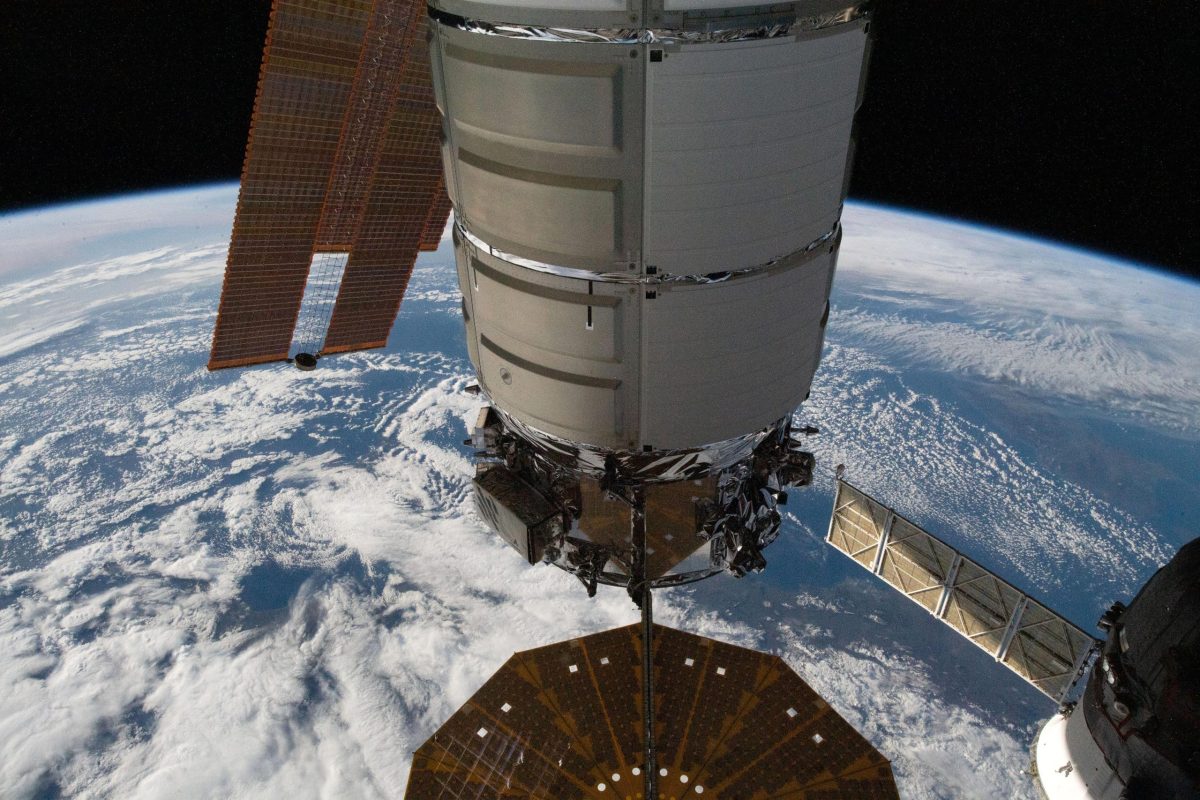The Cygnus cargo craft is pictured moments after being captured with the Canadarm2 robotic arm controlled by NASA astronaut Nicole Mann on November 9. Credit: NASA TV
NASA astronaut Nicole Mann, with NASA astronaut Josh Cassada acting as backup, captured Northrop Grumman’s Cygnus spacecraft using the International Space Station’s Canadarm2 robotic arm at 5:20 a.m. EST (2:20 a.m. PST) on November 9, 2022. Mission control in Houston will actively command the arm to rotate Cygnus to its installation orientation and then to guide it in for installation on the station’s Unity module Earth-facing port.
The spacecraft was able to rendezvous with International Space Station (ISS) successfully, despite the deployment of only one of its two solar arrays.

Northrop Grumman’s Cygnus space freighter is pictured on February 27 attached to the International Space Station after delivering 8,300 pounds of new science experiments, crew supplies, and station hardware to replenish the Expedition 66 crew. Credit: NASA
The Cygnus spacecraft launched Monday, November 7 on a Northrop Grumman Antares rocket from NASA’s Wallops Flight Facility, Virginia at 5:32 a.m. After successfully reaching orbit, it was only able to deploy one of its two solar arrays. NASA and Northrop Grumman made the determination not to deploy the second solar array after initial attempts to deploy it were unsuccessful, in order to remain focused on the spacecraft’s arrival at the ISS. The Cygnus cargo spacecraft completed four rendezvous burns on its way to the ISS.
With just the single solar array, Cygnus still has sufficient power to rendezvous with the space station on Wednesday, November 9. Northrop Grumman is working closely with NASA to monitor and assess the spacecraft ahead of tomorrow’s planned arrival, capture, and installation at the space station. Mission teams also are planning additional inspections of the cargo spacecraft during approach and after capture.

Northrop Grumman’s Cygnus space freighter, with its prominent cymbal-shaped UltraFlex solar arrays, is pictured approaching the International Space Station on February 21 carrying 8,300 pounds of new science experiments, crew supplies, and station hardware to replenish the Expedition 66 crew. Credit: NASA
This is Northrop Grumman’s 18th commercial resupply mission to the International Space Station for NASA. The Cygnus spacecraft is carrying a supply of 8,200 pounds of scientific investigations and cargo to the orbiting laboratory.
The spacecraft is named the S.S. Sally Ride in honor of the late NASA astronaut, physicist, and first American woman to fly in space.
Share your story or advertise with us: Whatsapp: +2347068606071 Email: info@newspotng.com















